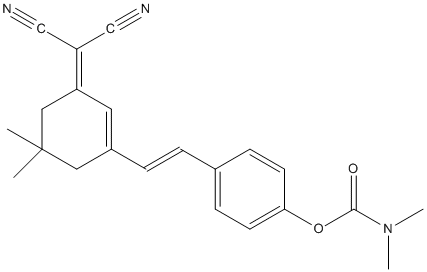IPAN
General
Type : Cyanide || Fluorescent Probe
Chemical_Nomenclature :
Canonical SMILES : C1C(CC(=CC1=C(C#N)C#N)C=CC2=CC=C(C=C2)OC(=O)N(C)C)(C)C
InChI : InChI=1S\/C22H23N3O2\/c1-22(2)12-17(11-18(13-22)19(14-23)15-24)6-5-16-7-9-20(10-8-16)27-21(26)25(3)4\/h5-11H,12-13H2,1-4H3
InChIKey : RXCATQMXCKMZEF-AATRIKPKSA-N
Other name(s) :
MW : 361.44
Formula : C22H23N3O2
CAS_number :
PubChem :
UniChem :
Iuphar :

References (1)
| Title : Observation of the elevation of cholinesterases activity in brain glioma by a near-infrared emission chemsensor - Ma_2020_Anal.Chem_92_13405 |
| Author(s) : Ma Y , Gao W , Ma S , Liu Y , Lin W |
| Ref : Analytical Chemistry , 92(19):13405-13410 : , 2020 |
| Abstract : Ma_2020_Anal.Chem_92_13405 |
| ESTHER : Ma_2020_Anal.Chem_92_13405 |
| PubMedSearch : Ma_2020_Anal.Chem_92_13405 |
| PubMedID: 32864956 |